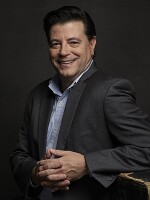If you live, work, or study anywhere near Yale's Old Campus, the sounds of the bells emanating from Harkness Tower are probably a routine part of your day.
Those bells are part of a playable instrument called the carillon. For decades, a student-run guild of carilloneurs at Yale University have kept the bells ringing around campus, while honing their skills and grooming new members to keep the tradition alive.
Technically speaking, the carillon is a percussion instrument. The carilloneur sits in front of a console of wooden bars. Each bar represents a note of the musical scale, and is connected to a clapper. When the carilloneur strikes the bar, usually with the heel of their hand, the clapper strikes the bell.
The instrument is colossal - carillons have at least 23 bells tuned chromatically, and the lower sounding bells can weigh thousands of pounds each. The Yale Memorial Carillon has 54 bells, weighing 43 tons. The bells were cast by John Taylor Bellfoundry in Loughborough, England.

“We consider ourselves very lucky,” said Yale University grad student and 4th year carilloneur Eva Albalghiti. “We really have one of the top instruments in the world, in terms of the sound quality of the bells. You'll notice when we get up there, especially the low bells are very resonate, have this very rich tone.”
The carillon traces its roots to 16th century Flanders. Construction of Harkness Tower, and the Yale carillon began amid the backdrop of World War I.
“A very charged time,” said Albalghiti, who also give tours of Harkness Tower. “You know, a lot of anxiety, a lot of fear. And in the midst of all that, Anna Harkness, a wealthy philanthropist, and also the mother of a Yale student, donates a million dollars to build this tower.”
That tower and the bells were completed in 1922, but for the first few decades it was called the Yale Memorial Chime. It was not considered a carillon.
“When the tower was originally constructed it had 10 bells. and when you have 10 bells on your instrument, it's actually not called a carillon yet, it's called a chime,” explained Albalghiti. “So for the first like 30, 40 years of its existence we had the Harkness Memorial Chime. And there were student's who rang it, and it was the Yale Guild of Bellringers, and that's sort of the musical roots of our organization today.”
The Yale carillon was officially dedicated in 1966, and the Yale Guild of Bellringers became the Yale Guild of Carilloneurs.
The climb to the top of Harkness Tower and the carillon is slightly claustrophobic. Climbing the tight spiral staircase to the top, you pass the Yale Guild of Carilloneurs office, which has the original chime console. As you climb higher you pass the practice carillon room. Climbing further you pass a huge space that once housed a water tank, and then finally you reach tiny room which houses the carillon console, which is near the top of Harkness tower.
The console is large, not unlike a large church organ. The wooden bars that strike the bells are laid out like a piano or organ and like the organ, there is a pedal board.
Eva Albalghiti slides into position in front of the console, and tears into a composition written for carillon. The piece is challenging - it has many fast notes, and complex harmonies. Her fists fly across the console, furiously striking the wooden bars.
She says despite its massive size, the carillon is quite versatile.
“The carillon has, I think the greatest dynamic range of any instrument out there, just because it is so big,” said Albalghiti. “You saw with that piece, there is a lot of pounding it in, you know throwing the clapper against the bell, but then there are these moments of incredible softness. You can get really really quiet on it, but those notes still come through.”
The Yale Guild of Carilloneurs is, and always has been a student-run organization. It has been co-ed since 1970. Students who are interested in joining the guild go through an audition process called "heel" because carilloneurs typically strike the wooden bars with the heel of their hand. For five weeks, auditioners receive lessons on the instrument from current guild members. Their entrance into the guild is decided by a performance.
There are currently 24 full time members of the guild. Guild member Paul Stelben said when he arrived on campus as a freshman, he knew nothing about the carillon. He didn't even notice the bells.
“Eventually when I came to the meeting and I learned more about it, I was like, 'Wow, this is something really cool,'” said Stelben. “A - that so few people do it; B - once I became more familiar with the instrument, musically what could be done with it.”





